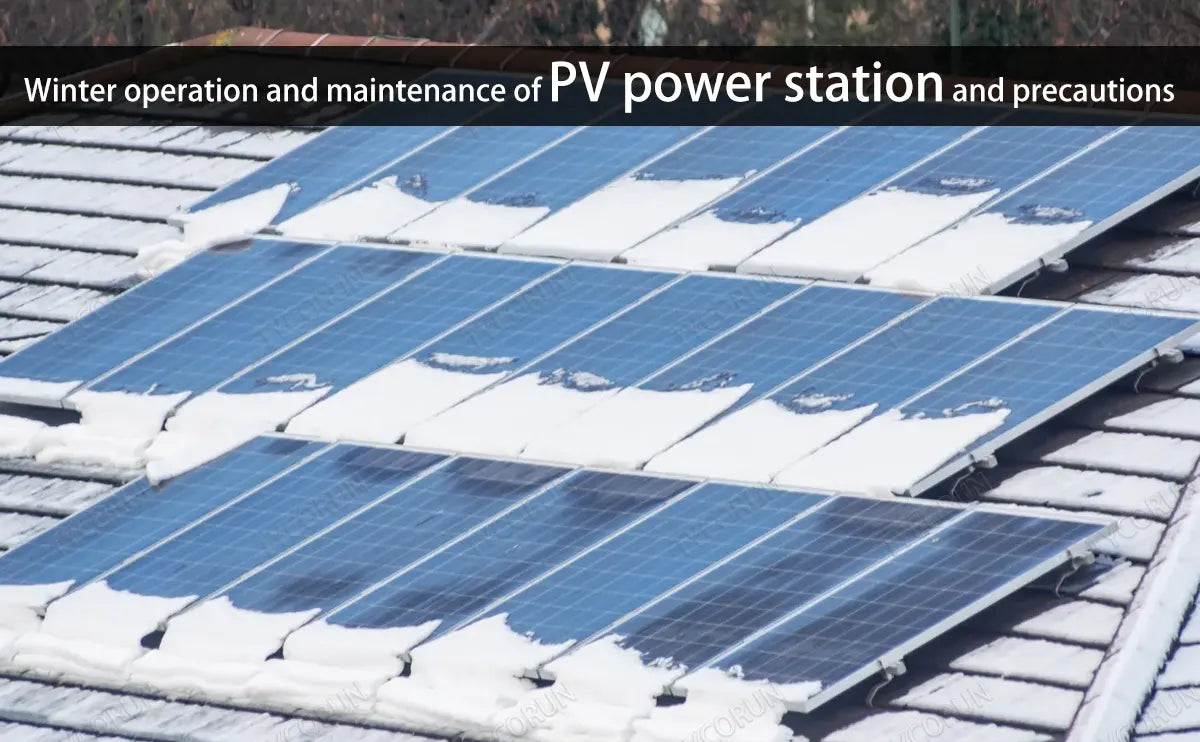
Main content:
With the arrival of winter, cooling and snowfall continue to appear, and some photovoltaic power stations have also begun to enter the "cold-resistant" mode.
In such a climatic environment, we should actively maintain the photovoltaic power station to ensure that the benefits of photovoltaic power generation are maximized. So, what should we do?
1. Maintenance of solar modules at low temperatures
In winter, PV modules are prone to dust and snow. According to the data, dust and snow can cause a loss of more than 5% of the power of the module. Therefore, it is particularly important to clean the PV modules regularly, which can not only prevent the occurrence of hot spots, but also prolong the service life of the modules.
● How to remove dust
In winter, smog and dust are also relatively serious, and dust adheres to the surface of the module, reducing the power generation of the power station.
Countermeasures: Regularly clean the dust on the surface of the components to improve the efficiency of light absorption. See how to clean solar panel. If dust accumulates, rinse with a soft brush and clean water with minimal force.
It is forbidden to wipe photovoltaic modules with hard objects, and never clean them with corrosive solvents. The module should be cleaned in the morning or evening when the light is low.
● How to remove snow
Winter snowfall will cover PV modules, blocking sunlight and reducing module power generation. And under the weight of snow, there is a risk that PV modules may collapse.
However, it is important to remember not to wait for the snow to become too thick before washing, as this may cause the modules to freeze, which can reduce the power generation efficiency and longevity of the system.
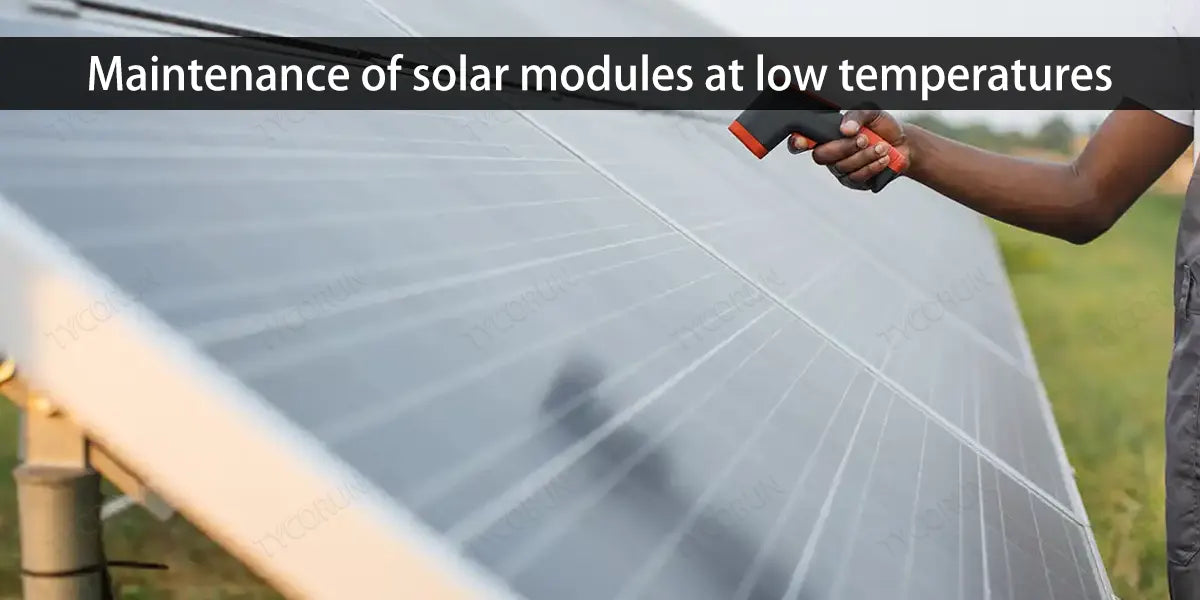
Solutions:
- It is recommended that the installation unit have a larger inclination angle, which can reduce the rate of snow accumulation and prevent snow accumulation.
- The components are kept at a distance from the ground to prevent snow from accumulating on the bottom.
- Slowly push the snow down with a soft cleaning item to prevent scratching the surface of the component.
- It is forbidden to step on the components to clean them, so as not to cause cracks or damage to the components.
- Clean up in time to prevent modules from freezing after snow accumulates, which will affect power generation.
- Snow can be automatically removed from components by intelligent robots.
● How to protect against the wind
Winter is often accompanied by strong winds, which can cause damage or tilting of PV modules, which in turn affects the normal operation and power generation efficiency of PV power plants.
Fastening components and brackets: During daily maintenance, maintenance personnel should carefully inspect the equipment in the PV area, paying special attention to those PV modules with loose briquetting. Identify and address issues in a timely manner and ensure that components and brackets are securely fastened to reduce the risk of being overturned by high winds.
Regular inspections: Regular inspections are recommended to ensure the robustness of components and brackets. This helps identify potential problems and take corrective action to prevent disasters.
2. How inverters operate normally in winter
As an important component of the photovoltaic power station, the external operation status information of the photovoltaic power station is basically sent by the inverter, and the operation and maintenance of the inverter in winter is also particularly important.
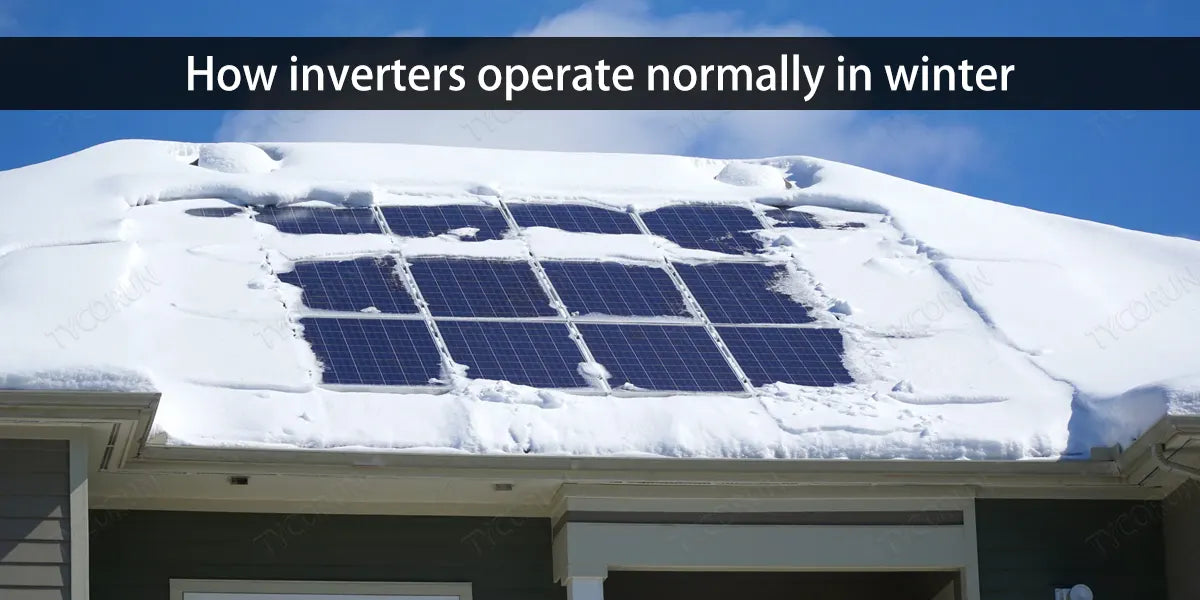
● Prevent snow accumulation
For an outdoor inverter to be installed, snow accumulation should be protected from the surrounding area, especially at the top and bottom. Snow accumulation on the top can damage the structural stability of the inverter installation and cause severe icing on the housing.
Snow at the bottom will bury AC and DC interfaces and communication equipment, which may cause fault alarms such as leakage current or affect communication.
Use tools such as plastic shovels or wooden shovels to clean up in time, and pay special attention not to damage the inverter casing and AC and DC cables during the cleaning process. And after cleaning, carefully check whether the wall where the inverter is installed is firm. Or install the inverter in an area protected by shading.
3. Ice freezing in the inverter housing
Ice formation in 1000w inverter housing is a common problem in winter. When the ambient temperature is too low, the inverter housing may condense and freeze. While this usually doesn't have much impact on the inverter's proper operation, too much frost can affect its heat dissipation performance and appearance.
Tycorun inverters are highly resistant to protection and corrosion, and are well adapted to extreme temperatures and harsh working environments.
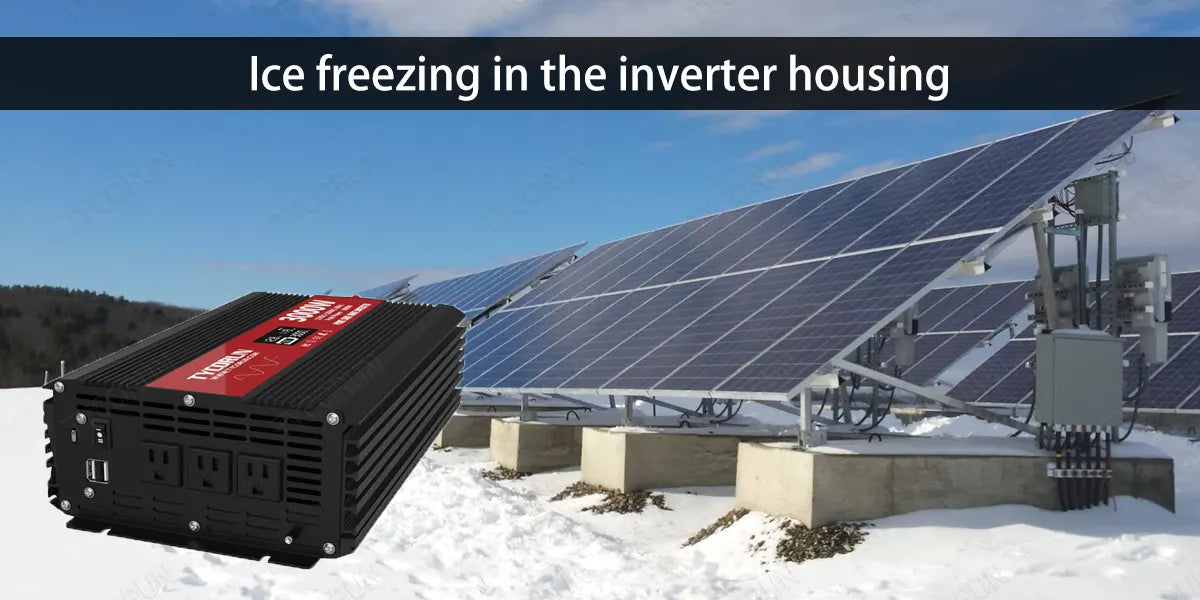
Wait for it to melt naturally: If the frost on the inverter housing is not very heavy, you can wait for it to melt naturally.
Regular cleaning: To prevent frost from condensing again, dust and dirt from the inverter housing should be cleaned regularly. Use soft cloth to wipe the surface and avoid using excessively rough cloths or detergents that contain chemicals.
Check the surrounding environment: The ice in the inverter housing may be related to the surrounding environment. Check whether there are problems such as cold air flow, humidity, or standing water around the inverter, and take appropriate measures to improve them.
Enhanced monitoring and maintenance: Regularly check the operating status of the inverter, including casing and heat dissipation. If an abnormal situation is found, measures should be taken to deal with it in a timely manner.
● The voltage is too high
The severe winter cold may cause the output voltage of the PV power supply array to rise, which may affect the normal operation of the inverter. In design and construction, the low temperature characteristics of photovoltaic modules need to be considered. Avoid string voltage exceeding the input voltage range of the inverter, to ensure the normal operation of the inverter.
- If the number of modules in series is too large, reduce the number of modules in series appropriately to keep the voltage within the voltage range of the inverter.
- If the measured string voltage is within the specified range, the inverter fault will report that the PV panel voltage is too high and an alarm will be given.
4. Precautions for PV power stations at different ambient temperatures
- Fireproof
In winter, the photovoltaic power station should also pay attention to fire prevention in low temperature weather. Winter is often the season when grass and trees are dry and easy to catch fire, and do not pile up flammable materials near the 3000w inverter.
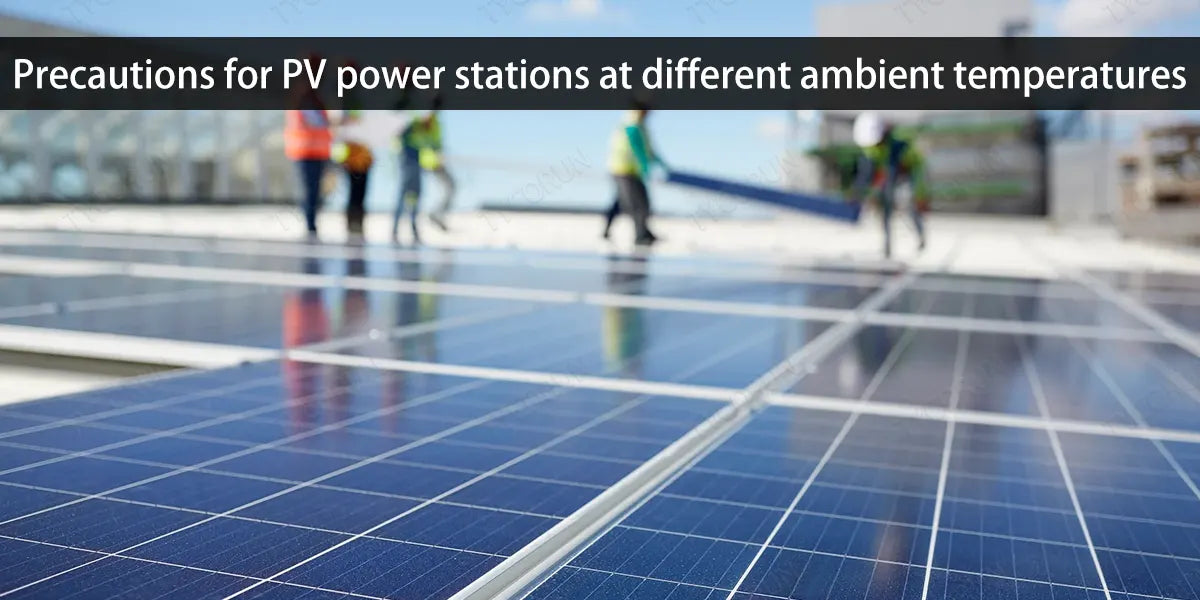
Due to the low ambient temperature, the outer insulation layer of exposed wires and cables is also prone to cracking and breakage. It is necessary to conscientiously do a good job of inspection and protection.
- Inverter monitoring data check
Today's inverters have the function of intelligent communication monitoring, and it is necessary to check whether the communication data of the inverter is normal during the physical examination. Whether the power generation of the inverter with the same capacity at the same time is close. If you find that a certain inverter shows a large power deviation, you should check for the cause in time.
- Inspect the cables regularly
In winter, the temperature is low, and cable joints are prone to aging, cracking, leakage and other phenomena. Regularly inspect cable glands to ensure reliable connections and prevent failures.
- Inspect the power distribution system regularly
During the peak of electricity consumption in winter, it is necessary to ensure the safe and stable operation of the power distribution system. Check circuit breakers, leakage protectors and other electrical equipment to eliminate potential safety hazards in a timely manner.
5. Conclusion
During the winter months, PV power plants require extra attention and maintenance to ensure system stability and maximum power generation efficiency. The amount of PV power generated in winter is affected by a number of factors, such as the solar elevation angle, daylight time, and high winds.
In order to overcome these impacts, the design, operation and maintenance of photovoltaic power plants also need to take into account the characteristics of winter and take corresponding measures.
For example, adjusting the angle of the module, increasing the frequency of module cleaning, and strengthening risk management to improve the power generation efficiency and stability of the photovoltaic power station.
Related articles: top 5 solar panel brackets companies, top 10 solar inverters, inverter cable